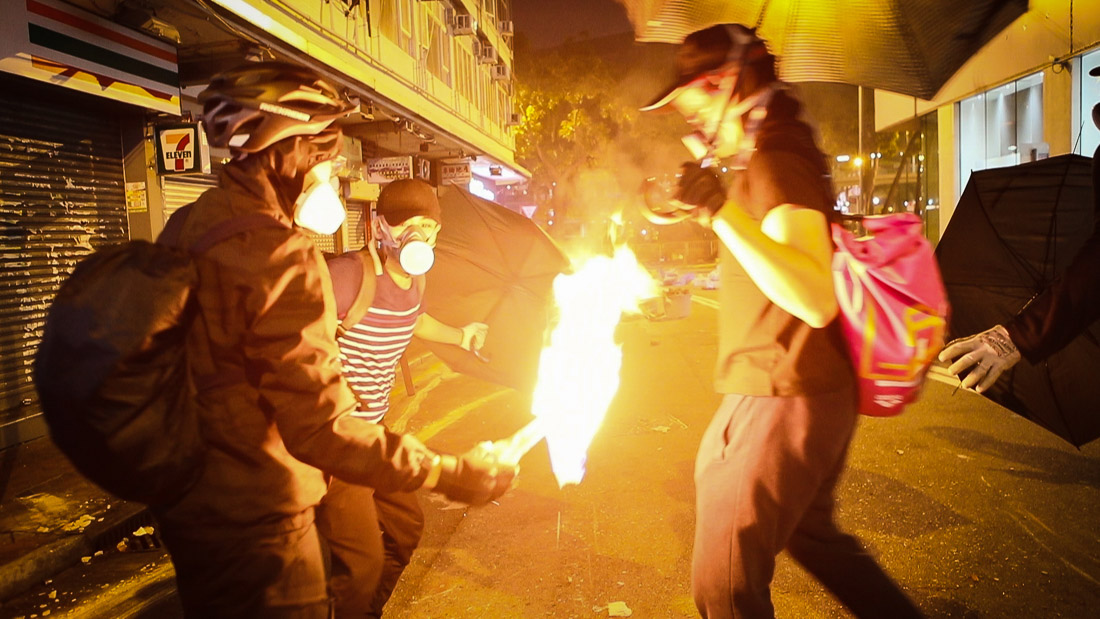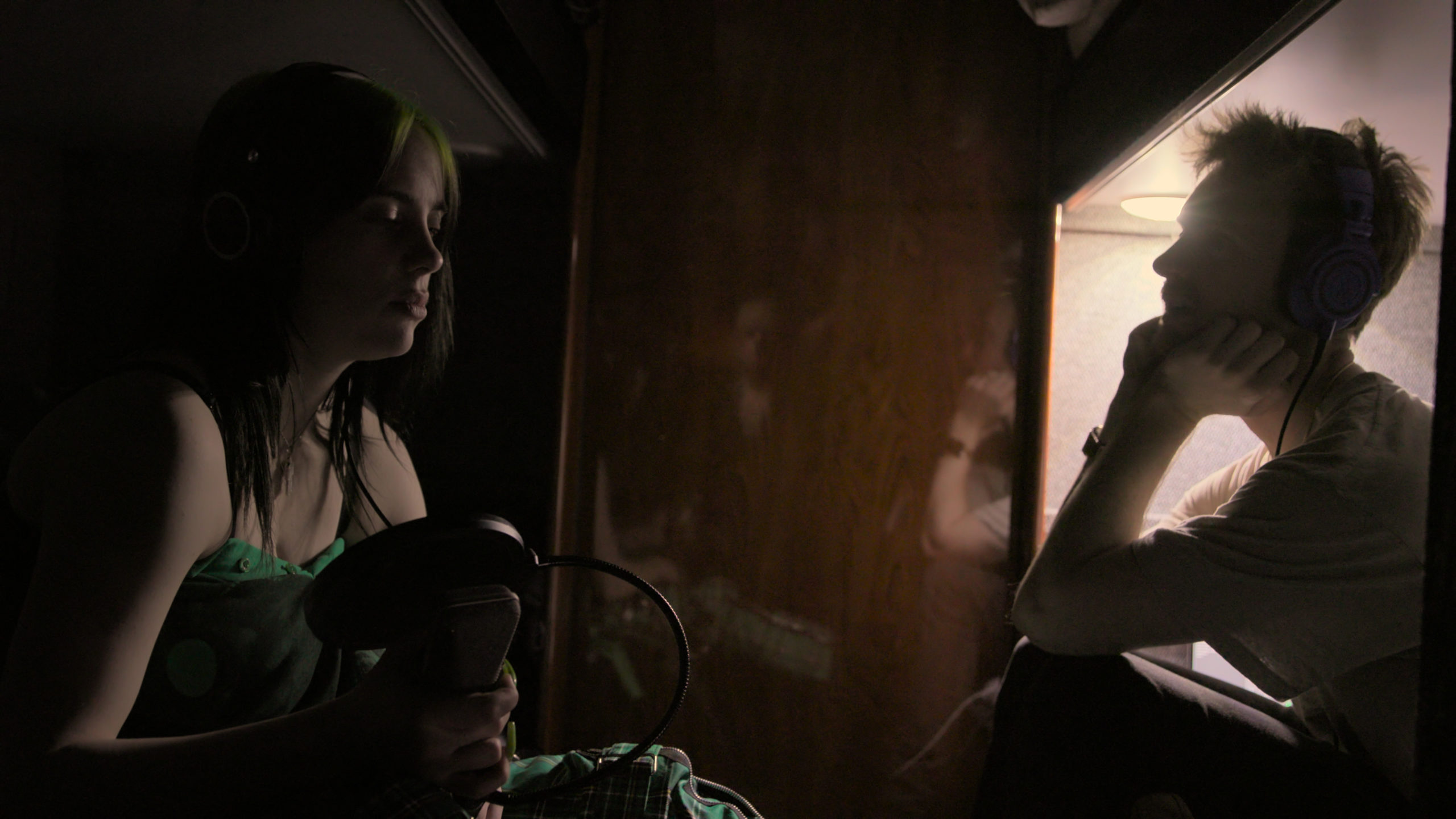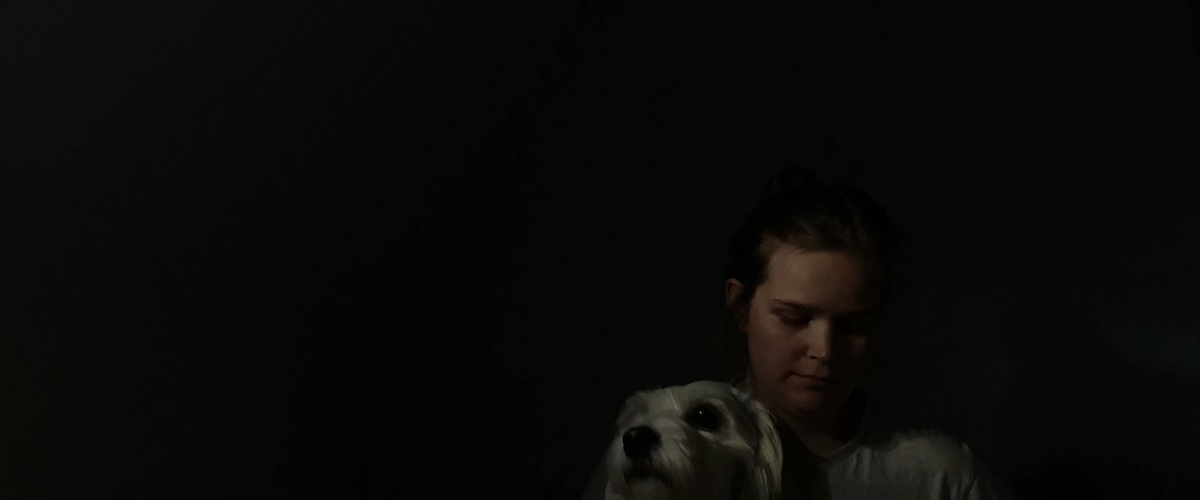“I’ve been very curious about China’s role in international politics because I had already seen Chinese companies and Chinese authorities make an impact in Afghanistan,” says director Anders Hammer. The director of Do Not Split, one of ten films on the Oscar shortlist for Best Documentary Short, explains on the phone from Norway why the protests that erupted in Hong Kong in 2019 caught his eye. Do Not Split witnesses from the thick of the action as the protests, triggered in response to the Hong Kong government’s Anti-Extradition Law Amendment Bill Movement, assume greater resonance as a fight for autonomy from mainland China. Hammer’s camera never wavers as the protesters confront heavily armed police and respond with increasingly shrewd measures. Do Not Split is a pulse-pounding portrait of activism in action.
With its focus on character as well as its eye for the larger context, Do Not Split demonstrates the filmmaker’s journalistic sensibility while delivering a gripping piece of cinema. Hammer says that he branched out from journalism to documentary filmmaking after finding working in the news somewhat limiting. “It didn’t give me the tools to tell stories that I felt were important,” explains Hammer. “From what was going on on the ground, I could go much closer if I went into the field of documentary.” The director says that platforms like Field of Vision, which produced Do Not Split, prove ideal for filmmakers to explore modes for storytelling that combine elements of journalism and documentary alike.
After filming in conflict zones like Afghanistan, Iraq, and Syria, Hammer brings his camera to the frontlines of the fight for democracy in Hong Kong in his riveting film. Hammer, who’s been living abroad for a decade including six years in Afghanistan, adds that his previous documentaries gave him a firsthand glimpse of China’s global reach. “They have really big development projects in Afghanistan that are in very dangerous areas. I saw it as a part of their interest in expanding both economically and politically. I saw the same thing in Kenya, where I made two documentaries.”
Hammer says the nature of the protests immediately caught his interest. “The way young people were in the street defending freedom of speech and basic human rights, I couldn’t understand how that would play out against one of the most powerful nations in the world,” explains Hammer. China’s history of human rights violations, as well as its confrontational attitude to resistance, piqued his curiosity, although he wasn’t immediately sure if we would or should make a film in Hong Kong. “I decided to try to film as close as possible and use techniques that I’ve practiced while working in conflict areas—being flexible, being mobile, having all the batteries and memory cards in a backpack and then trying to go with the flow in the streets and follow the movement.”
Despite the dizzying violence that escalates throughout the production as Hammer captures the blow/counter-blow dynamic between the police and the protesters, the director says that his experience filming in conflict zones prepared him for the shoot. “It was definitely not the same as filming on the frontline of the war against ISIS,” admits Hammer. The director’s previous collaboration with Field of Vision, Our Allies, was a three-part doc series about anti-ISIS combatants in Iraq and Syria. Hammer adds that shooting in Afghanistan, Iraq, and Syria brings the risk of being kidnapped, as well as being hit by live ammunition, which occasionally did pierce the protests in Hong Kong.
As for shooting in Hong Kong, Hammer says that the surveillance and escalating police presence mostly had him worried about the subjects of his film, rather than his own safety. “When you are there as a foreigner, you are the taking the lowest risk,” explains Hammer. “I was at risk of being randomly hit by tear gas canisters, rubber bullets, or fire bombs that were flying in different directions, but the protesters that I was following were fighting for their future. They were risking their futures, their careers, and facing the possibility of being sent to prison.” While Hammer escaped with only a broken nose during shooting, Do Not Split features passionate testimony from activists like Joey, who expresses concerns that she will never secure work in her desired profession—teaching—if the Chinese government learns of her participation.
Joey gradually becomes a focal point through which Do Not Split sees the protests. In addition to the kinetic action captured in the streets, Hammer features calmer introspective moments—confessionals of a sort—in which the protesters articulate why the fight. “I wanted to mirror the sentiment in the street,” observes Hammer on his casting choices. “This last wave of protests in Hong Kong were different from earlier protests because they didn’t have high profile leaders in the traditional sense. They were about being a collective and many protesters were hiding their faces.” Hammer says he got to know characters like Joey simply by embedding himself within the protests, following the fluid action, and getting close to individuals in the process. The directors says that the process involved following activists for long periods and often using only short amounts of footage to convey different moments from the events.
By immersing himself in the protesters’ cause, Hammer gains extraordinary access. Do Not Split features some of the best verité footage of any documentary this year as the director observes in close proximity how the protesters evade, escape, and outwit the growing barricades of police officers. For instance, a sequence captured on October 1, the National Day in China, sees Hammer’s camera scurry alongside a protester named Theo as he and the collective navigate walls, roofs, and an army of armed cops to circumvent a blockade. “I don’t think I could have been hiding with Theo on the roof or running around in the streets if I hadn’t followed him many times already,” explains Hammer. “It’s a matter of trust as much access. When we are climbing down that hill and the police are blocking the roads, that’s also the result of many days spent following the same people.” Hammer clarifies that his use of “we” isn’t accidental. By embedding oneself within the protesters, one inevitably feels part of the collective.
The proximity to the subjects also enabled Hammer to put the cameras in the protesters’ hands when COVID-19 prevented him from returning to Hong Kong. Do Not Split appeared as a shorter preliminary version at the 2020 Sundance Film Festival, but Hammer says he knew the story was far from over even though protests had quieted down by film’s premiere. “There were discussions in Hong Kong whether they would erupt again or whether people were too, physically tired to continue,” explains Hammer. “Then the Coronavirus pandemic hit. You can see that the local government straight away used the opportunity of the pandemic to crush the resistance. That was an easy way to control and stop mass gatherings.”
The third act of Do Not Split sees the once hyperactive streets of Hong Kong barren and silent. With footage shot by Cathy Chu, as well as images captured by the activists themselves, the film witnesses the silent formation of the police state. Propaganda about mass gatherings and obedience plasters the streets that formerly advertised words of resistance. As the pandemic afforded the Chinese government new opportunities to track the protesters, Hammer says it was obvious that the film was incomplete. “It looked like the government would be able to stop the protests for a long while. That was important to include in the film because this was the answer from the local government,” explains Hammer.
“But then you also have Beijing answering in May and June with a national security law, which put very strict restrictions on the possibility of the people to protest. When that law came in the summer of 2020, I saw it as a direct answer from China. This was Beijing’s way of really kicking back.” China’s response has been so strong that on Feb. 28, The Washington Post declared, “every prominent, and even moderate, opposition voice in Hong Kong is either in jail or in exile, crushing the city’s democratic aspirations as Beijing tightens its grips around the city’s core institutions.” The new security has many activists facing charges of “conspiracy to commit subversion,” according to the Post. Forty-seven people were arrested this weekend alone, bringing the number of activists charged under the new law to 100.
Do Not Split premiered its 35-minute cut at DOC NYC in the fall, providing a timely snapshot of the pandemic’s effect beyond the disruption of economies and social norms. “No matter what your political ideas might be, this story really goes into the core of every man or woman having human rights, to have the freedom of speech, and have the opportunity to raise their opinion,” says Hammer. The pushback against the protests is proof of China’s growing global influence, as well as world leaders’ willingness to turn a blind eye, but also the necessity of the protesters’ actions captured in the film. “You can see that during the protests, the activists wished for support from the rest of the world,” notes Hammer. “It should have been easy for the rest of the world to support basic human rights.”
Do Not Split is available to stream from Field of Vision.
Update: The film screens with all the Oscar nominated documentary shorts via TIFF Bell Lightbox April 1 and Hot Docs Ted Rogers Cinema on April 8.
Field of Vision – Do Not Split from Field of Vision on Vimeo.













